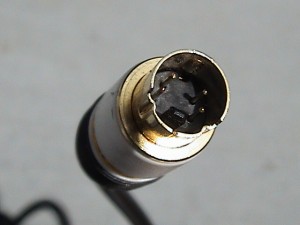When learning to fly a remote controlled model, getting a good teacher is worth a lot. But if all the teacher can do is watch the plane crash, he/she is of not much use…
Most transmitters have a “trainer” connection. This allows two remotes to be connected together. One is preforming the master-role and is actually controlling the model. The other remote is the slave and sends signals to the master. The teacher can program his master-transmitter to copy some of the slave’s signals, thereby letting the student control the plane. A simple toggle of the switch returns the control to the teacher.
Obviously, each brand of transmitters has its own “standard” of doing things. Some use a DIN6 contact, others use a mono- or stereo 3.5mm jack and there is the obligatory “proprietary connector”. Here are my notes of the expedition into the trainer-cable jungle.
Continue reading ‘Futaba FF9 Trainer interface’ »

